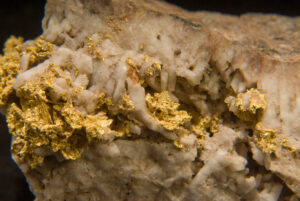
Throughout history, gold has been esteemed not only for its intrinsic beauty but also for its profound cultural significance as a symbol of wealth, power, and divine authority. In various cultures, gold has been associated with excellence and achievement, often used in awards and decorations to honor significant accomplishments. This enduring reverence for gold underscores its universal status as a marker of prestige and influence.
In African civilizations, gold has played a pivotal role both as a form of currency and as a representation of social status. The Akan people of Ghana, for instance, have a rich tradition of crafting gold jewelry and artifacts, reflecting their sophisticated gold-working techniques and the metal’s importance in their society. Similarly, the ancient Kingdom of Aksum, located in present-day Ethiopia and Eritrea, was among the earliest African states to mint its own gold coins, signifying both economic prosperity and sovereign authority. These examples highlight how gold has been integral to African cultures, serving as both a medium of economic exchange and a symbol of elevated status.
Today, gold continues to hold significant status and influence both in Africa and globally. Its enduring value is evident in its use as a hedge against economic instability and inflation, attracting investors seeking financial security. Moreover, gold’s cultural and symbolic importance persists, as it remains a preferred material for crafting jewelry, awards, and ceremonial objects, reflecting its timeless association with wealth and prestige. The sustained allure of gold underscores its unique position as a universal emblem of value and status across different eras and societies.
African Kings & Their Golden Treasures
Mansa Musa and the Mali Empire
Mansa Musa, who reigned over the Mali Empire in the 14th century, is often regarded as one of the wealthiest individuals in history. His legendary pilgrimage to Mecca in 1324 showcased his immense wealth and the significance of gold in his empire. Accompanied by a caravan of approximately 60,000 people, including 12,000 slaves, Mansa Musa distributed vast amounts of gold along his journey, particularly in Cairo, leading to a significant devaluation of gold’s value in the region. This extravagant display not only highlighted his personal wealth but also underscored the Mali Empire’s abundant gold resources and their influence on regional economies.
The Ashanti Kingdom & the Golden Stool
In the late 17th century, the Ashanti Kingdom of present-day Ghana revered the Golden Stool, known as the Sika Dwa Kofi, as the embodiment of the nation’s soul and unity. According to legend, the stool descended from the sky through the invocation of the high priest Okomfo Anokye, landing before King Osei Tutu, the first Asantehene. This sacred artifact, never to touch the ground or be sat upon, symbolizes the collective spirit of the Ashanti people. The stool’s significance is so profound that it became central to the Ashanti identity and governance, with its symbolism integrated into the nation’s flag and cultural practices.
Other African Dynasties & Their Gold Reserves
Beyond Mali and the Ashanti, other African civilizations also showcased their wealth and craftsmanship through gold. The ruins of Great Zimbabwe, for instance, stand as a testament to a once-thriving kingdom deeply involved in the gold trade, which played a pivotal role in its economic prosperity. Similarly, the Benin Empire, located in present-day Nigeria, was renowned for its intricate gold artwork, including plaques and sculptures that adorned royal palaces, reflecting the empire’s affluence and artistic heritage. These artifacts not only highlight the material wealth of these societies but also their sophisticated artistry and the central role of gold in expressing status and cultural identity.
Famous African Gold Artifacts & Relics
Ancient Egyptian Gold & Burial Treasures
The golden mask of Pharaoh Tutankhamun, discovered in 1925, is a masterpiece of ancient craftsmanship. Weighing over 10 kilograms and inlaid with semi-precious stones, the mask was designed to ensure the young king’s safe passage into the afterlife. Recent studies suggest that the mask may have been initially crafted for Queen Nefertiti, indicating the complex history of royal artifacts.
Lost Treasures of Africa
The legend of the lost gold mines of Monomotapa, in present-day Zimbabwe, has intrigued explorers for centuries, symbolizing Africa’s rich mineral heritage. Additionally, during the colonial era, numerous gold artifacts were looted, leading to a significant loss of cultural heritage. Efforts are ongoing to trace and repatriate these invaluable relics to their countries of origin.
Iconic African Gold Artifacts in Museums
The Mapungubwe Gold Rhino, unearthed in South Africa in 1932, is a testament to the region’s sophisticated metallurgical skills during the 13th century. Measuring 14 cm in length and crafted from thin gold foil over a wooden core, it underscores the symbolic importance of the rhino in local culture. Many African gold artifacts currently reside in European museums, sparking debates on cultural ownership and the ethics of repatriation. These discussions aim to address historical injustices and restore cultural heritage to its rightful communities.
Across Africa, gold jewelry has been integral to cultural identity and social status. The Akan people of Ghana are renowned for their intricate goldweights and regalia, symbolizing power and heritage. In Mali, the Tuareg artisans craft silver and gold jewelry, such as the Agadez Cross, reflecting their rich nomadic traditions. Similarly, the Zulu of South Africa incorporate gold into ceremonial adornments, emphasizing communal values and ancestral reverence.
Contemporary African designers are blending traditional motifs with modern aesthetics. South African-Italian artist Ambra Gambale, for instance, merges classic African elements with contemporary design in her fine jewelry collections. The rise of ethical gold and gold-plated alternatives also reflects a shift towards sustainable fashion, catering to a global audience while preserving cultural narratives.
Gold remains central to African ceremonies, symbolizing wealth, purity, and continuity. In many cultures, gold jewelry is essential in weddings, rites of passage, and royal events, serving as tangible links to ancestry and societal standing. This enduring significance ensures that gold jewelry continues to be cherished across generations, adapting yet retaining its core symbolism.
Gold and Religion in Africa
In various African cultures, gold has symbolized wealth, power, and a divine connection. This precious metal was integral to religious artifacts, temples, and shrines, reflecting its sacred status. The use of gold in these contexts underscored its association with the divine and the eternal.
In Ethiopia, the Orthodox Church incorporated gold extensively into religious art and architecture. Emperor Ezana of the Aksumite kingdom was notably the first world leader to mint coins featuring the Christian cross, symbolizing the nation’s early Christian identity. Similarly, in West Africa, Islamic art and architecture often featured gold, especially in royal mosques, highlighting the metal’s significance in expressing religious devotion and royal authority.
Gold has played a pivotal role in African ancestral worship practices. It is used in burial rituals and offerings to honor ancestors, reflecting a belief in gold’s spiritual energy and protective qualities. This enduring tradition underscores the metal’s profound cultural and religious significance across the continent.
Gold has remained an enduring symbol of power, status, and spiritual significance across Africa for centuries. From the golden treasures of ancient empires to its role in religious artifacts and royal regalia, gold has always been more than just a precious metal—it represents identity, heritage, and influence.
As Africa’s economies grow and global trends evolve, gold continues to hold its place in finance, fashion, and cultural traditions. Whether as an investment asset, a statement of prestige in modern jewelry, or a sacred element in religious practices, gold’s relevance persists. Its ability to bridge history with contemporary value ensures that it remains a marker of wealth and distinction.
Preserving and appreciating Africa’s gold heritage is vital, not just for historical recognition but for its continued role in shaping identity and economic prosperity. Whether through investment, artisanal craftsmanship, or the restoration of cultural treasures, gold remains a vital link between Africa’s past and its future.



